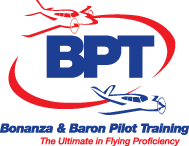By Jason Blair, ATP, CFI-I, MEI-I, FAA Designated Pilot Examiner, AGI
Several years ago, my wife and I purchased a 1947 Stinson 108-1. A few months after the purchase, we sent the plane to a mechanic friend of mine to conduct the first annual inspection under our ownership. Wanting to have a good idea of what had been done on the aircraft, and to some degree, what was needed, I spent some time before this event going through the maintenance logs carefully.
The logbooks weren’t too messy. A 17-year gap of flying before it was refurbished helped reduce the number of years of material that would have been entered. But that isn’t to say there weren’t some discrepancies.
In thoroughly reviewing the logbook, I discovered two Airworthiness Directives (ADs) that had been written off as not-applicable, then noted by a later mechanic again, as needing to be checked regularly every 100 and 25-hours respectively. Checking an AD every 25 hours makes it much less practical to use an aircraft! The good news was that after some research, a little time with my mechanic, and some updated logbook entries, we were able to show again that the ADs were actually N/A and that the previous mechanic had just not understood that a replacement system from the original allowed that. The reason I tell this story is that not every mechanic knows every aircraft inside and out. An owner has some level of responsibility to make sure that, when they provide logbooks to a maintenance professional for inspection or work, they do so in a way that the maintenance person can make sense of the logged history.
Many private aircraft logbooks are, well, to put it nicely, a mess.
Just handing your mechanic a pile of books with no organization means they will have to spend more time sorting through what is there to get a better picture of the airplane. This gets even harder when it is the first time a mechanic has seen the plane and logbooks.
A little work on the part of the owner ahead of time can make this task less daunting. With that in mind, here are a few tips that can help you, the owner.
Get Organized
The maintenance documents may include logbooks for engines, airframe, and propellers, piles of major alteration forms (FAA form 337s), a stack of previous owners’ registrations, maybe a few old airworthiness certificates, copies of maintenance invoices, promotional materials, supplemental type certificates (STCs) from various upgrades, and bills of sale, to name some of the more relevant items. Mixed in with the more important documents, I have seen stacks of things, from pictures of the aircraft during refurbishment efforts to pilot logbooks to the grandkids’ drawing of the aircraft done one day at an airport. All of these things need to be sorted into what should be kept with maintenance logs and what maybe will be kept just as “aircraft history” in a separate box. While certainly interesting, keeping copies of previous airworthiness certificates, bills of sale, and registrations are not required review material by the mechanic. Maintain them separately from the actual current maintenance information and provide the mechanic with only current documents.
Visit your local office supply store. Using binders with protective sleeve inserts is a great way to protect the old, fragile copies of STC and 337 paperwork. If you want to get really crazy, put things in order by the date the work was completed! I am only half-joking here.
Create a List of when Inspections are Due
As a pilot and aircraft owner, it is your job to review the logs to make sure they had been done. Don’t simply try to keep this in your head.
The annual inspection isn’t the only thing you need to track. Other trackable items include pitot-static or transponder system checks, ELT inspections, VOR checks, GPS database requirements, and ADs along with the annual inspection.
Have ADs Tracked and Well Documented
I mentioned tracking ADs. This is something not typically done well by aircraft owners. Many ADs only need to be dealt with once, but some are what we call “recurring.” They can be date-based or hours-of-use based. In some instances, the intervals of time can be relatively short, happening more frequently, depending on the owner’s use of the aircraft, and more often than a yearly inspection may occur. An active pilot can easily have these inspections pass by them in a year of flying between annuals, and technically, find themselves not flying an “airworthy” aircraft as a result.
Build a list of what ADs are applicable and keep track of the hours operated between annual inspections. If you aren’t certain which ADs may apply, the FAA lists them here. With a little digging on the specific systems of your aircraft, you can achieve a better understanding of what and why ADs are required.
Insist on Detail in a Mechanic’s Logging of Work Completed
Too many times, I have seen logbook entries for an annual inspection state, “annual completed,” and go into no further detail. Have them detail if brakes were changed, if spark plugs were checked or changed, and what type of oil or filter was used when work was done. These little details allow you as the owner, and any other maintenance providers, to have a clearer understanding of what exactly was done on an aircraft over time. This doesn’t always have to be done in the logbook entry for the aircraft. It could refer to an invoice that goes into more detail that the owner may retain as a more in-depth record of the aircraft’s maintenance.
Know the History of the Aircraft
Going through the entire history of your aircraft can sometimes tell very interesting stories about it. In our Stinson’s case, we found a 17-year gap in any maintenance work, and then an extensive two years of logbook entries, major alteration forms, and STC documentation. The plane had been parked for many years before a new owner refurbished and upgraded it.
Go through the aircraft records, looking not only at engine, airframe, or propeller logs but also at any major alteration forms that may have been completed to understand what is really installed fully.
In each of these forms that you review, an owner or maintenance professional can determine what changes may have been made, what new potential ADs may apply, or if you are lucky, what ADs no longer need to be addressed at future inspections!
Have a concern that some of these may be missing? It can certainly happen over many years of an aircraft’s life. The good news is that, if done properly, these things are documented with the FAA, and the FAA is pretty good about keeping records. For a small fee, the FAA offers the ability to request copies of aircraft records. You can locate the Aircraft Certification Requests here.
I always encourage owners to do this for an aircraft they plan to keep for any length of time.
Make Copies, and Keep Them Safe
I can’t stress enough this final piece of advice – make copies and keep them in a place where they won’t get destroyed.
Aircraft logbooks tell the history of an airplane, but they also keep it legally able to be flown through the documentation of work completed and required inspections. Having these records go missing, get destroyed, or become no longer readable can mean that the aircraft is no longer able to be proven airworthy.
One of the first things I do with any aircraft I own, and strongly encourage customers of mine with whom I work, is to make copies. And I mean copy everything.
Physical copies are a good start, but I typically use a scanner and make digital copies. Even just pictures of all of the pages using your phone is a good start. Don’t have a scanner on your computer? No problem. There is a wide variety of “scanner” apps you can use on your phone or tablet device. Many of these turn the scans into pdf files.
It seems obvious but, keep the copies in a different place than the originals.
This is part of why I like scanned digital copies best. Saving these in some form of online storage, such as a DropboxTM, Google DriveTM, or Microsoft’s OneDrive® to name only a few options, allows the storage to be saved and survive any potential single-computer failures. This may sound a little paranoid, but wouldn’t you rather make sure you have a backup of the documents that would allow you to reconstruct the aircraft documentation history instead of having to re-do all the inspections?
These are a few things that I have personally found that help not only my aircraft but others with which I have worked. They make the job of the mechanic easier, help ensure things don’t get missed, and, in some cases, reduce the cost of the inspection due to the fact that the mechanic needs to spend less time, on, “the paperwork” and more time focusing on what is important – the maintenance of your precious airplane.
Jason Blair is an active single- and multi-engine instructor and an FAA Designated Pilot Examiner with over 5,000 hours total time and over 3,000 hours instruction given and has flown over 100 different makes and models of general aviation aircraft. In his role as Examiner, over 1,500 pilot certificates have been issued. He has and continues to work for and with multiple aviation associations that promote training and general aviation. He also consults on aviation training and regulatory efforts for the general aviation industry. Jason Blair has published works in many aviation publications, a full listing of which can be found at www.jasonblair.net.
Articles and news items provided by Avemco® are not intended to provide technical or legal advice. Content is for general information and discussion only and is not a full analysis of the matters presented. The information provided may not be applicable in all situations, and readers should always seek specific advice from the FAA and/or appropriate technical and legal experts before taking any action with respect to any matters discussed herein. Articles provided by independent sources solely reflect the views of their respective authors and should also not be regarded as technical or legal advice.



